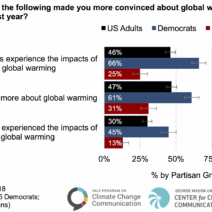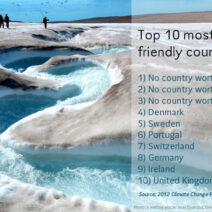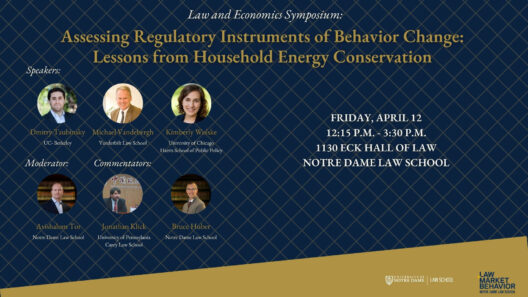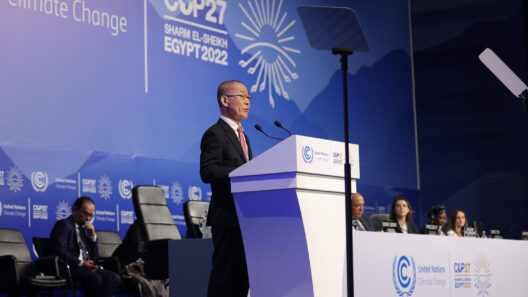The US food industry is at a pivotal juncture, shaped by the advancing specter of global warming. As the climate continues to shift, its effects resonate through food production and distribution systems, raising indispensable questions about our future sustenance and ecological responsibilities. Understanding these dynamics is essential for grasping how our changing climate could significantly alter the fundamental nature of our food systems.
Firstly, it is salient to acknowledge the intricate relationship between agriculture and climate change. The agricultural sector contributes approximately 9% of total greenhouse gas emissions in the United States. Conversely, it is also one of the most impacted sectors by climate change, which manifests in a variety of transformative ways. Rising temperatures disrupt traditional farming schedules, while increasingly erratic weather patterns create more frequent and severe droughts and flooding. For example, corn and soybeans—staple crops in the US—are particularly sensitive to temperature fluctuations. Studies indicate that a mere increase of 1°C can diminish yields significantly, jeopardizing food security and economic stability.
With these climatic adversities, the question arises: how can the food industry adapt? A growing movement towards sustainable agriculture offers one solution. Techniques such as regenerative farming, which prioritize soil health and biodiversity, promise not only to increase resilience against climate fluctuations but also to sequester carbon. By fostering an ecological equilibrium, regenerative practices could transform our food systems into powerful allies against the rising tide of global warming. Yet, this transition requires investment, education, and commitment from all stakeholders involved — farmers, governments, and consumers alike.
Moreover, the food supply chain is becoming increasingly susceptible to the effects of climate change. Transportation, storage, and distribution of food are all interlinked with environmental sustainability. A longer supply chain results in increased carbon footprints, while localizing production could mitigate emissions. Urban agriculture is gaining traction as a viable alternative; community gardens and vertical farms represent innovative approaches to achieving food security closer to home. These initiatives not only reduce transportation emissions but also foster community resilience and awareness.
Perhaps even more alarming is the rising prevalence of foodborne illnesses and pests due to climatic changes. Warmer temperatures enable certain pathogens and pests to thrive, jeopardizing food safety. The emergence of superbugs resistant to conventional pesticides is a growing concern, driven by extensive agricultural practices that do not account for the ecological balance. This culminates in a pressing need for integrated pest management strategies that are both environmentally sound and effective in protecting crops.
The market is also changing. Consumer awareness and preferences directly influence the food industry landscape. A significant segment of the population is now prioritizing sustainability, seeking out organic and ethically sourced options. The trend towards plant-based diets, spurred by environmental concerns, further indicates a dramatic shift in culinary preferences. Such a transition could reduce the demand for resource-intensive animal agriculture, which is one of the largest contributors to greenhouse gas emissions globally.
Furthermore, technology plays a crucial role in redefining our food systems. Innovations such as precision agriculture utilize data analytics to optimize resource usage, minimizing waste and enhancing productivity. Drones and satellite technology monitor vast farmlands, allowing farmers to make informed decisions, adjusting watering schedules, and crop rotations in real-time. This not only improves yield but also decreases the impact of farming on the environment. The role of biotechnology should not be overlooked either; genetically modified organisms (GMOs) can be engineered for resilience against climate impacts, making them an essential part of future food security discussions.
However, the implementation of such technologies is not without controversy. Ethical concerns surrounding GMOs, the monopolization of seeds by large corporations, and the potential loss of biodiversity are pressing issues. An open dialogue among stakeholders can lead to responsible practices that utilize technological advances while safeguarding ecological integrity.
Moreover, governmental policies and regulations shape the food industry landscape. As climate change becomes an undeniable reality, policymakers are compelled to reassess agricultural subsidies and incentives. Support for sustainable practices must outweigh investments in fossil fuel-based agriculture, steering the industry towards a more resilient future. Agencies are beginning to recognize the urgency and complexity of climate issues. Integrating climate science into agricultural policy is critical for future progress; without coherence between agricultural practices and environmental responsibility, food security could be at risk.
Education and public awareness campaigns can play a vital role in facilitating this transformation. Empowering consumers with knowledge about the impacts of their food choices encourages eco-friendly behaviors. Sustainability labels and certifications can help guide choices, but comprehensive education is essential for understanding the complexities involved. By championing local, sustainable products, consumers can drive demand for practices that mitigate climate change.
In conclusion, the intersection of the US food industry and climate change presents both substantial challenges and promising opportunities. Adapting to the realities of global warming necessitates an intricate understanding of the multifactorial interconnections between agricultural practices, consumer behavior, and technological advancement. The shift towards sustainability lays the groundwork for resilient food systems capable of enduring climatic upheavals. It beckons for a collective reevaluation—a renaissance in how we perceive our relationship with the environment and the sustenance that nourishes us. Each stakeholder has a pivotal role to play in this journey towards a more sustainable and equitable food future, wherein we harmonize our plates with the health of the planet.







